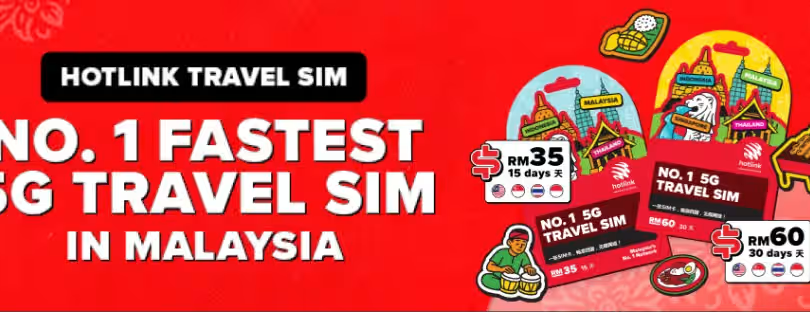
Don’t Be the Last One Ejecting a SIM Card in 2025
Let’s be honest — if you’re still carrying around a SIM ejector tool in 2025, you might as well be using a flip phone and asking strangers for the Wi-Fi password.
The mobile world has moved on. Quietly, then suddenly. And at the center of it all? eSIM — that tiny bit of tech that just made your SIM card feel like a fossil.
You probably didn’t get a push notification about it. There was no big headline. But somewhere between Apple killing the SIM tray and travel eSIMs popping up like espresso bars in Milan, the shift happened.
This isn’t a feature anymore. It’s a movement. And if you’re still fiddling with plastic chips, this article is your wake-up call.
The eSIM Revolution Wasn’t Televised
This wasn’t some flashy keynote moment. There was no “and one more thing.”
eSIM snuck in the side door, then took over the room.
Apple ditching SIM trays in the U.S.? That was just the start.
Now Android phones, tablets, smartwatches, and even laptops are onboard. You can even install multiple eSIMs on the same device. Swap between them. Delete them. Add new ones while waiting in line for coffee.
It’s like app-based connectivity. Zero hardware drama. Total control.
And travelers? They’re the early winners here.
The Real Game-Changer for Travelers
Let’s paint the scene.
You land in Bangkok at 7 AM, exhausted and a little dehydrated.
No time (or patience) to search for a SIM card kiosk.
But wait — you open your eSIM app, tap “Activate Thailand Plan,” and boom. Instant data.
No paperwork. No store visits. No overpriced roaming.
You’re connected before your luggage hits the carousel.
This is why travelers — especially digital nomads and remote workers — are ditching physical SIMs in droves. It’s not just easier. It’s smarter.
Why the Shift Feels So Sudden
So why does this feel like it happened overnight?
Because the groundwork has been quietly laid for years.
- Phone makers got serious: Apple, Samsung, and Google started building full eSIM support — even letting you move plans between devices with a tap.
- eSIM providers exploded: From niche travel startups to global operators, new players made buying and activating a data plan feel like ordering food on Uber Eats.
- Roaming prices stayed outrageous: People finally snapped and started looking for smarter options.
- Consumer behavior changed: We got used to digital-first everything. eSIM fits right into that world.
Suddenly, the future became now — and plastic SIMs started looking pretty outdated.
eSIM Isn’t Just a Travel Hack Anymore
Yes, eSIM started as a great trick for avoiding roaming charges.
But it’s evolved into something much bigger.
Now you can:
- Store multiple eSIMs on one device
- Instantly switch between local plans for work, personal use, or different countries
- Use eSIMs in your tablet, smartwatch, or laptop
- Connect your car or IoT device without physical cards
This isn’t just replacing the SIM card. It’s rewriting how mobile connectivity works — and it’s spreading far beyond phones.
What You’ll Miss If You Stick With Plastic
Still holding onto your SIM card “just in case”? Here’s what you’re missing out on:
🔄 Instant plan switching — no more waiting in shops
🌎 Global flexibility — have data wherever you land
💼 Cleaner phones — especially on eSIM-only models
⚙️ Remote provisioning — update your connectivity from anywhere
🧠 AI-based plan matching — some platforms now suggest the best data plan based on your trip details
Hanging on to a physical SIM now is like clinging to a CD in the Spotify era. You can… but why?
The eSIM Market Is Heating Up
And let’s talk industry for a second — because it’s not just consumers noticing.
The telecom space is getting crowded with eSIM-first players.
Some are targeting travelers, others go after IoT or enterprise. But the common thread? They’re all faster, leaner, and more flexible than traditional carriers.
This pressure is finally forcing legacy telcos to catch up.
Carriers who once made you visit a store to get a plan are now rushing to support QR-code activations and in-app provisioning.
And if they don’t? Users are happily moving on.
What’s Still Holding It Back?
Now, fair’s fair — eSIM isn’t perfect yet. A few pain points remain:
- Some budget phones still don’t support it
- Transferring eSIMs between devices can be messy (but it’s improving)
- Not all providers are transparent about pricing or data caps
- The setup process can vary wildly depending on where you’re buying
But these are speed bumps, not roadblocks.
The tech is improving fast, and support is expanding globally.
Give it another 12 months? Most of these friction points will be history.
So, What Should You Do Right Now?
1. Check if your device supports eSIM — Most flagship phones from the last 3–4 years do.
2. Try a travel eSIM — You can get global data starting at just a few euros.
3. Explore multi-eSIM apps — Some let you store multiple plans and switch on the fly.
4. If you’re in business or telecom? Start thinking beyond SIM cards. The eSIM economy is shaping up fast — don’t be left behind.
And seriously — toss the SIM ejector tool. You’re not going to need it much longer.
Final Word: This Is the Moment
There’s always that moment when a new tech quietly becomes the new normal.
We saw it with streaming. With mobile payments. With digital boarding passes.
And now? It’s happening with mobile connectivity.
eSIM just made its move. And if you blinked, you probably missed it.
But don’t worry — there’s still time to catch up. If you’re not sure which eSIM is the best for you, check out the best eSIM finder tool.
Just don’t be the last one ejecting a SIM card in 2025.









